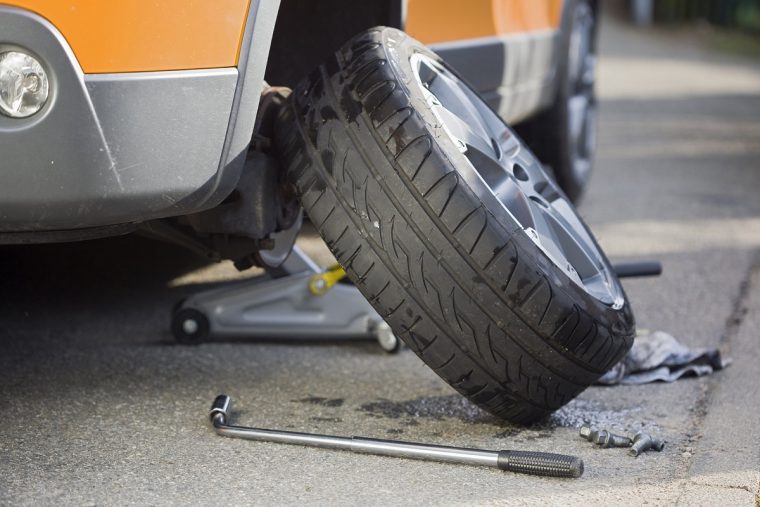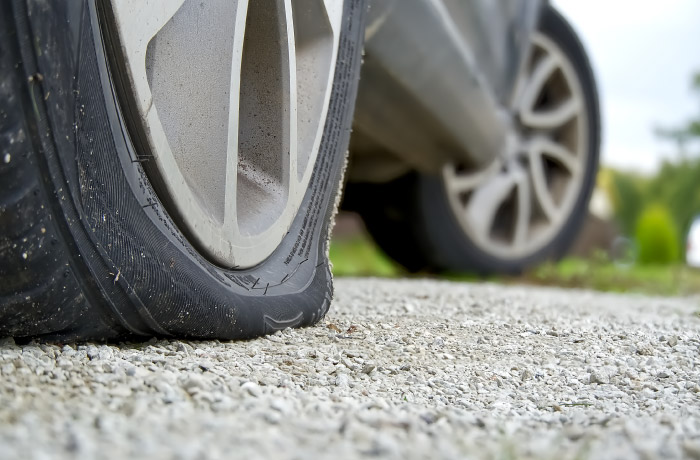Repairing a flat tire is an essential life skill every car owner should have. Your tire can get damaged at any time, and if you don’t know how to repair a flat tire, you’ll be entirely dependent on a mechanic. And if there is no mechanic nearby, you’ll be stuck.
Here is a quick DIY guide to repairing a flat tire.
Table of Contents
What Causes a Flat Tire?
Before we delve into repairing a flat tire, let’s discuss the key reasons causing it. There are six leading causes for a flat tire, including:
Reckless Driving
Poor driving is a common reason for tire damage. If you have a sports car with decals on it, it could be tempting to drive it fast. But if you over speed regularly and apply sudden brakes, your tire will experience more wear and tear. Also, driving in unfriendly conditions, like through debris or potholes, can damage your tire. It is, therefore, essential to be mindful when driving.
Bad Tire Conditions
If your tire is outdated, it could be at a higher risk of damage. Ideally, you should change your tire every 50,000 miles or six years, whichever comes first. Using your tire for any longer can increase the risk of damage.
Sharp Objects
If you drive over a sharp object like glass or nail, it will pierce into your tire, causing an air leak. If the piercing is minor, the tire will gradually lose air, and you may not notice it until a significant amount of air has been lost. If the object is sharp and the piercing is big, the tire will immediately lose the air.
Heat
Thermal expansion is a common reason for flat tires. When the temperature is high, the tire tubes can expand, increasing the internal pressure. As the temperature increases, the inner tire surface can weaken and eventually tear, leading to air leakage.
Valve Stem Failure
If your car has a flat tire, but there is no sign of puncture, it’s probably because of valve stem failure. The valve step allows the air to enter the tier. If the stem has malfunctioned, the tire won’t take in air.
Tire Pressure
The last cause of tire damage is high tire pressure. If you have inflated your tire a bit too much, the pressure inside the tire tube will increase. This high pressure can tear the tire tube and cause a flat tire.
Prerequisites for Repairing a Flat Tire

Now that you have understood the causes of a flat tire, let’s discuss the tools and components needed to repair it. Here are the tools you’ll need.
- Jack
- Lug wrench
- Tire puncture sealant
- Tire plug kit
- Vehicle owner’s manual (if you don’t know how to change the tire)
Repairing a Flat Tire: Steps to Follow
You can’t expect to find a garage nearby when your tire gets damaged. It’s essential to know how to replace a flat tire, so you can continue your journey without relying on anyone else. Follow these steps to repair a flat tire.
Find the Leak
The first step in repairing a flat tire is to find the leak. There are several ways to do that. For starters, you can conduct a physical examination to see any visible damage on the tier. If you don’t see anything, inflate the tire and look for air leakage.
There are two ways to spot air leakage:
- By listening for a hissing sound
- By feeling for air around the tire
Sometimes, the leak can be minor and difficult to spot through a physical examination. In that case, you can use the soap water solution to spot a leak. Mix some soap in water, and apply the soap solution to the tire. As air escapes, it will form soap bubbles. Watch out for such bubbles.
Use a Tire Puncture Sealant to Fix the Leak
Once you find the leak, the next step is to repair it. Before proceeding further, remove any object, such as glass or nail, that has punctured your tier. Next, pull out your tire puncture sealant, and pour the sealant in your tire through the inflation tube.
Please note that tire companies have different instructions for using a sealant. Be sure to read the instructions carefully before using the product. After pouring in the sealant, drive the car for a few meters to evenly distribute the sealant in the tire.
Also, tire sealants are a temporary solution, and they last for 3 days or 100 miles (whichever comes first) only. Once you seal your tier, drive to a nearby garage and get your tire replaced.
Use a Tire Plug Kit
If you need a solution that lasts longer than a tire sealant, you can use a tire plug. However, to use a plug, you’ll need to take your tire out. Use a lug wrench to loosen the jug nuts. Then, jack up the car using a trolley jack and take the tire out.

Once the tire is out, look for the damage using the same steps discussed in the previous section. If you see any protruding object, pull it out. Mark the damaged spot with chalk or market to ensure you don’t lose track of it.
The next step is to use a rasp tool to clean the hole and take out any dust or debris sitting there. Now, take the plug and thread it to the insertion tool. Insert the tool, along with the plug, in the hole. Pull the insertion tool out, leaving the plug inside.
Finally, cut the excess plug and seal the plug with a bit of cement. Then, inflate the tire and check for any leakage. If there is leakage, you’ll need to use another plug. If there’s no leakage, you’re good to go.
Please remember that a tire plug can last up to 20,000 miles. Be sure to replace your tire in the meantime.
Conclusion: Repairing a Flat Tire
Repairing a flat tire is easy, especially if you’ve done it before. However, if you’re a beginner, following the above steps can help. Remember that carrying a spare tire isn’t a sustainable solution, as multiple tires can get damaged simultaneously or at short intervals. Repairing a flat tire can be a life-saving skill in such cases.





